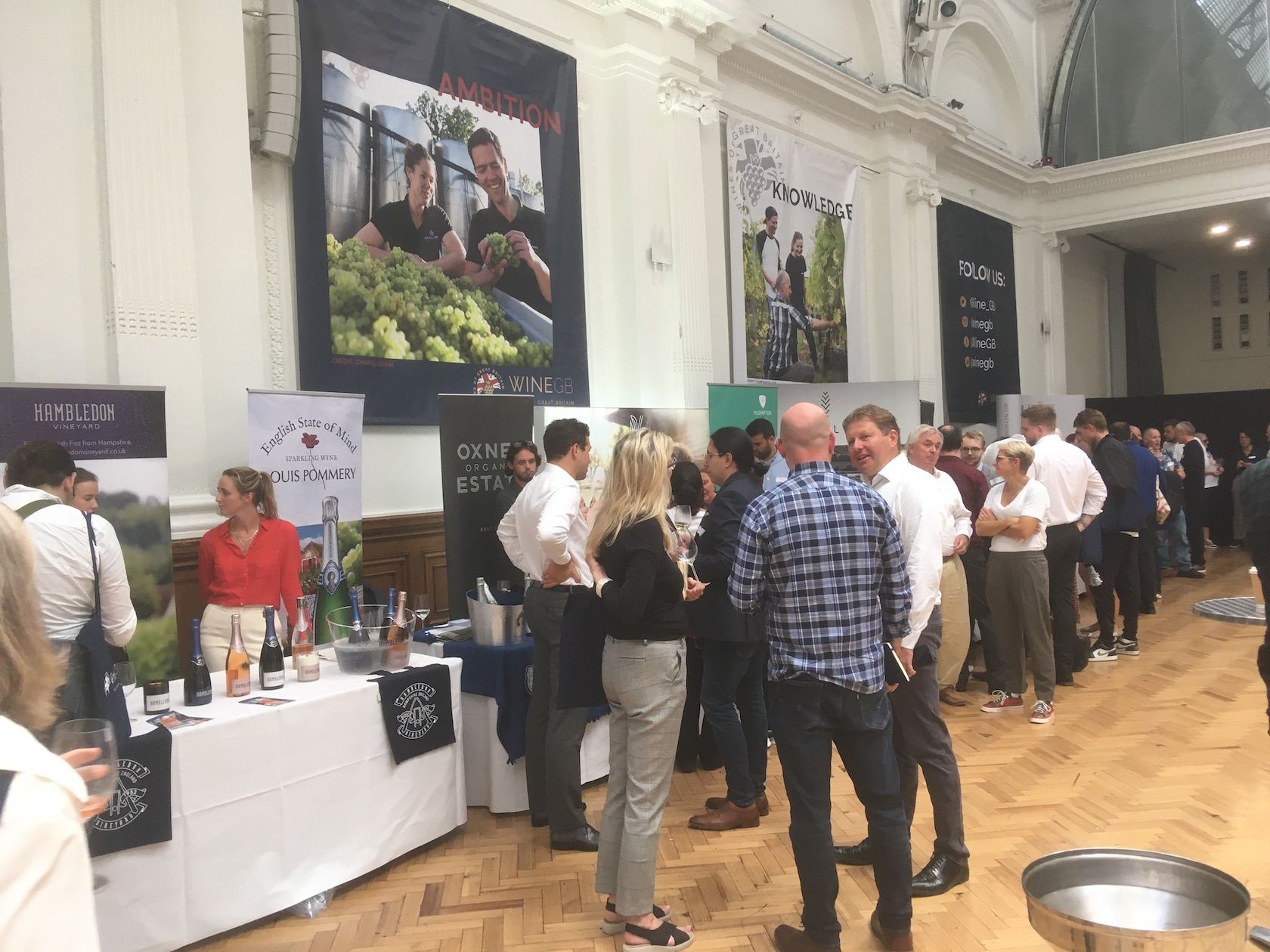“With British wines getting better each year, the outlook looks brighter than ever – despite the dark clouds overhanging the economy,” writes Keay.
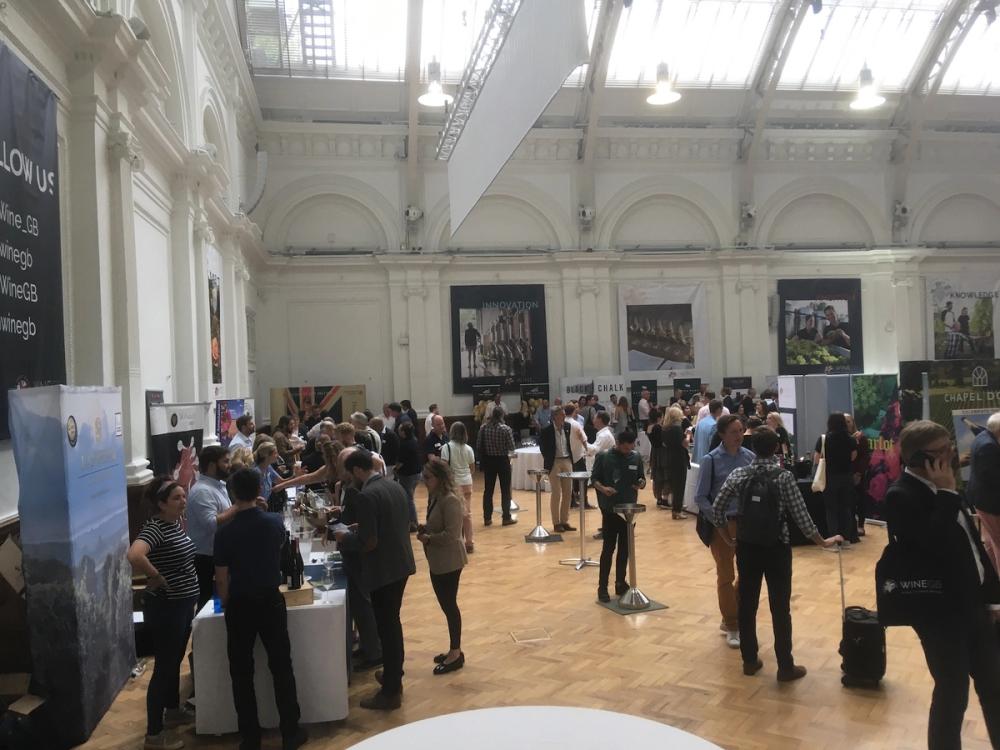
A treasure trove of exciting finds: WineGB tasting, September 6, 2022
It’s one of the last days of this glorious, hot summer and I’m sitting on the terrace at Bolney Wine Estate in Sussex, one of the early pioneers of the English wine industry. Looking out across the very healthy looking 18 hectare vineyard, where everything from Bacchus to Pinot Noir and Chardonnay grow, it is hard not to feel that the British wine industry is on a real high.
With a good harvest expected (hopefully) this year, with production now around 500,000 bottles of still and sparkling wine, Bolney’s fortunes seem somehow emblematic of the wider industry. OK, other producers weren’t bought out, as Bolney was by Freixenet Copestick back in January (for an undisclosed sum) but the acquisition demonstrated how international conglomerates are increasingly minded to have English producers within their portfolio.
Unsurprisingly then the mood at this year’s WineGB tasting was pretty upbeat reflecting the anticipation of a good quality harvest after a rather so-so one, hopefully the end of Covid’s damaging impact on the UK on-trade – although this was largely offset by a rise in cellar door and off trade sales – and the sense that this industry really has come of age.
“Sales have increased by nearly 70% over the past two years and the number of vines planted each year has averaged more than 1.6m… there seems no deceleration in the pace of innovation, product development and consumer engagement,” said Wine GB CEO Simon Thorpe.
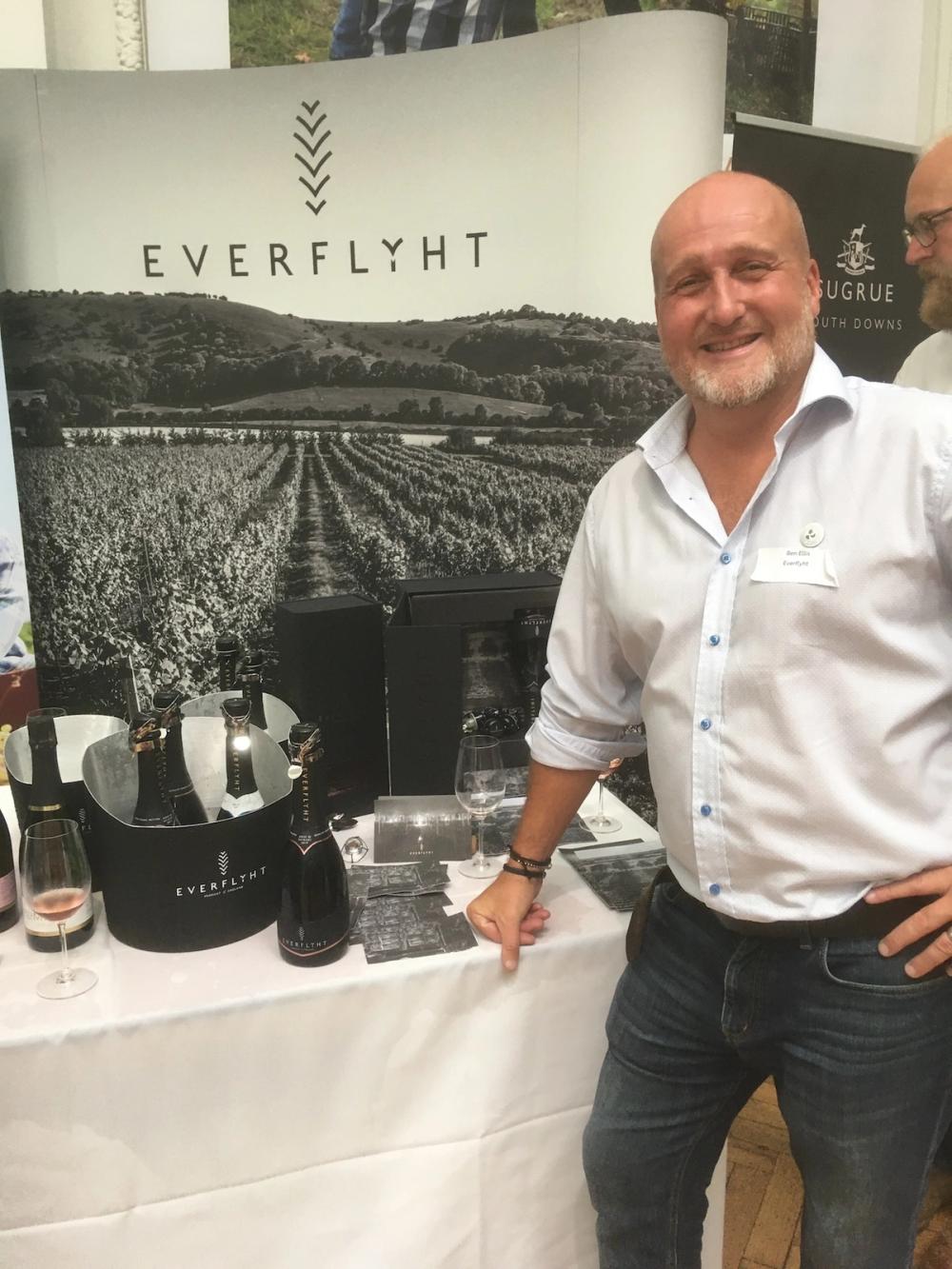
One of the many impressive newcomers: Ben Ellis from Everflyht
This was, by any standards, a big tasting with industry stalwarts like Nyetimber, Chapel Down, Balfour Wines and Hattingley Valley up alongside rising stars like Roebuck Estate and Norfolk’s Flint Wines and for me, quite a few unknowns like Oastbrook Estate, Burn Valley Estate and newbie Everflyht. With almost 880 vineyards and 195 wineries – numbers that keep on rising every year – staying abreast of British wine producers is now almost a full time job.
So it was good to see the return of previous tasting’s Focus Tables, as well as GBWines 2022 Award Winners, which this year included single variety still wines, NV and MV sparkling wines, classic method Blanc de Noirs and sparkling wines made by the non-classic method. Lots to take in so my strategy was to seek out the new and unknown but also taste a few old favourites to take a highly subjective pulse of the UK’s wine industry in 2022.
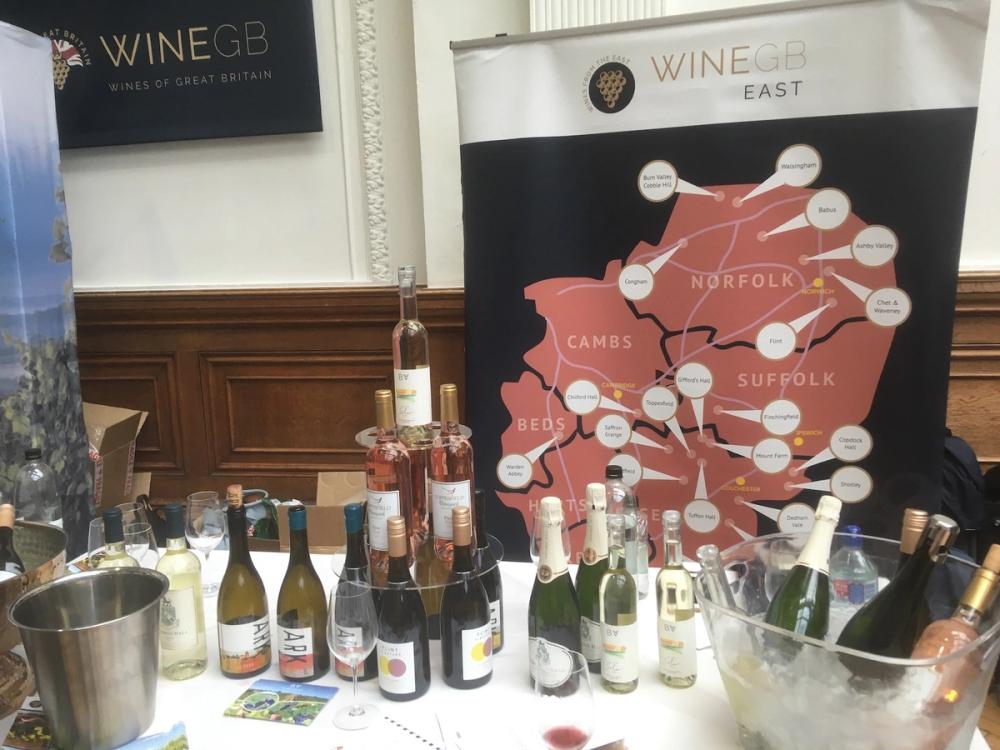
One of the well-curated regional tables
A treasure trove of newbies
Some of the most interesting new producers were to be found on the regional tables set up to highlight small producers in the South-East, East Anglia, Wales and Wessex. With most of the wines on show being still wines rather than sparkling there was a lot of innovation here, with producers not afraid to blend classic varieties with crossings, and varieties other than Chardonnay and Pinot Noir increasingly making themselves felt, notably Pinot Gris and Pinot Blanc.
Stand-outs from these regional tables included from Hastings in the South-East, Carr-Taylor’s delicious sparkling White Pinot 2015, an equal blend of Pinot Blanc and Pinot Noir showing long lees-ageing and 5 grams of residual sugar. With a current annual capacity of 50,000 bottles and producing two other distinctive wines, 1066 and Cannonball, this is a producer we will probably hear more of. Also from the South East, Stopham’s still Pinot Blanc 2021 was very appealing, surprisingly rounded and big despite just 11% alcohol, suggesting that this producer – currently making 35,000 bottles of some seven wines – is another growing force.
From Pembrokeshire in west Wales, Velfrey Vineyard’s sparkling Cuvée Reserve 2019 (67% Seyval Blanc and 33% Pinot Noir) and its traditional method sparkling Velfrey NV (78% Seyval Blanc, 12 Pinot Noir and 10% Chardonnay) were both very appealing, showing great freshness and fruit-forwardness, whilst for something very different indeed (appealing to natural wine lovers) two amphora-aged wines from the Hebron Vineyard in west Wales, a red Rondo 2021 and a Solaris 2021: these wines had just been bottled and frankly still need to settle down, but show ambition. White Castle Vineyard, just outside Abergavenny, which won surprise plaudits with its Pinot Noir Precosse two years ago, showed a moreish Siegerrebe 2021.
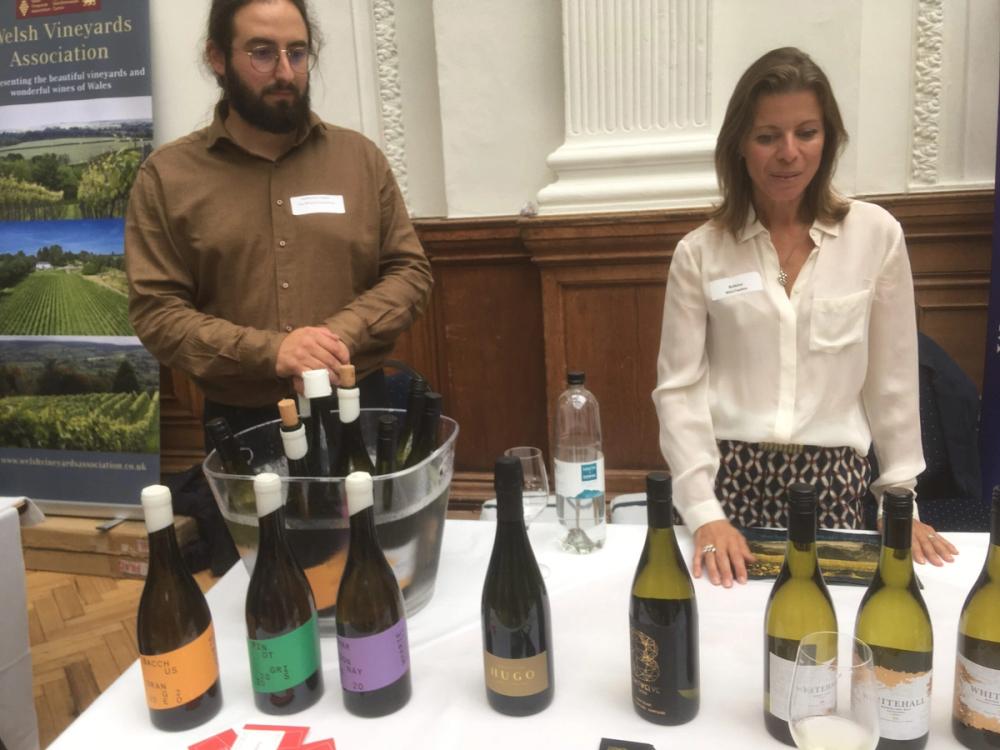
The Wharie Experience: non-intervention wines from the New Forest
From Wessex – mainly Hampshire – there was newbie The Wharie Experience, a non-intervention producer from Sway in the New Forest, showing three 2020 wines, a slightly too dry and acidic Chardonnay, a rather moreish Pinot Gris and the star, a Bacchus Orange: just 11%, this was nicely balanced with some soft tannins supporting expressive fruit.
Amongst the Regional Tables it was East Anglia that surprised the most, suggesting that it is very much early days for Norfolk and Suffolk in England’s wine renaissance. Last year a visit to Flint Vineyard in Norfolk revealed the white-focused producer makes a fine Bacchus, here at the WineGB tasting, though, its Silex Blanc 2021 was the only wine on show, a 60/40 blend of Chardonnay and Pinot Blanc, light oak, lovely structure.
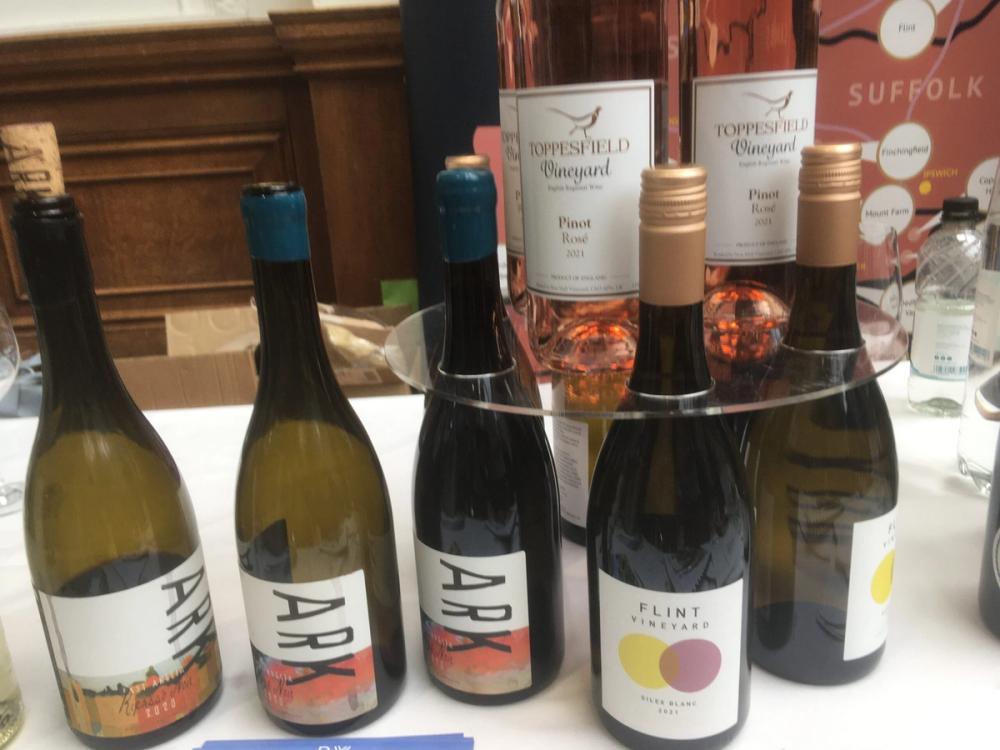
Further towards the north Norfolk coast, Burn Valley Vineyard’s Solar 2021 is a delicious late harvest wine, finely balanced, not too sweet and very elegant. Suffolk’s Giffords Hall Classic Cuvée 2018 showed all the positive aspects of that great year, the equal blend of Pinot Noir and Pinot Blanc showing a lovely moreish profile, lots of green apple, pear and quince. And finally two unusually full and ambitious wines from Swedish family team at nearby Mount Farm Vineyards, the quite full and juicy Ark Pinot Noir 2020 and the Ark Ripasso Noir 2020, made from Pinot Noir and Acolon grapes air-dried on straw mats for 90 days before going into stainless steel and oak, and then bottled.
So what of the other wines?
Lack of space prevents me from going into much detail but here are ten producers/wines that impressed, in no particular order.
The Grange Classic NV – This may be NV but actually contains mostly 2018 fruit according to owner Zam Baring, whose ambitious plans for his Hampshire winery are ongoing. He suggests this wine is singing right now, and I’d agree… it’s hitting all the right notes.
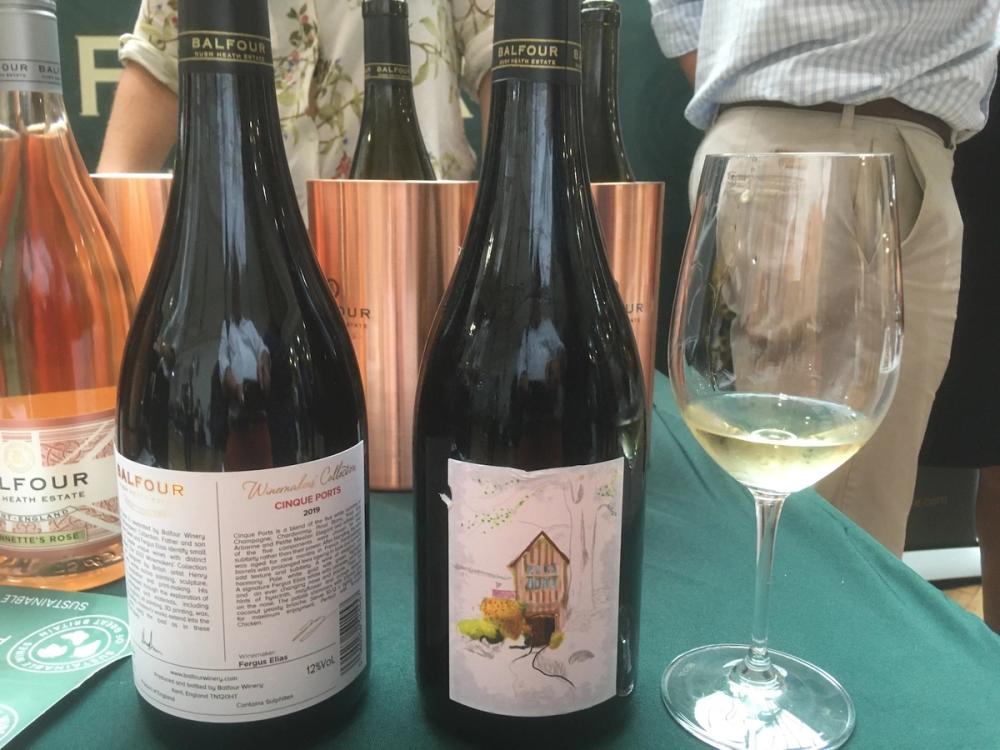
Balfour Estates, Cinque Ports 2019 – Winemaker Fergus Elias’s delicious and complex still take on a Champagne blend comprising all the permitted varieties including Petit Meslier and Arbanne. One for ageing but drinking great now.
Black Chalk, Wild Rose II 2018 – Jacob Leadley is a real fan of Pinot Meunier saying it works really well in his Hampshire terroir and this lovely complex and moreish wine, where it comprises 47% of the blend, confirms he’s right.
Langham Wines Estate , Pinot Meunier 2018 – This 100% PM spent two years on the lees in old oak and one in bottle and the result is an almost flawless sparkling wine. Damn good when I tasted it down in Dorset a year ago, even better now.
Everflyht Rose de Saignée 2019 – This newbie owned by Ben Ellis is off to a flying start with this deep “bled” pink blend of Pinot Meunier and Pinot Noir. Highly distinctive and moreish.
Chapel Down Kit’s Coty Bacchus 2020 – The plaudits for wines from Chapel Down’s star vineyard usually go to the Chardonnay and the 2019 is impressive but I really loved this big, rounded Bacchus which underwent wild fermentation in oak barrels before bottling. Checks in a 13% but the best Bacchus I came across during the tasting.
London Cru, Pet Nat 2021 – OK, there are quite a few Pet Nats out there but this spritzy, lively example made by the Fulham winery with the finest Essex fruit is about as good as they get.
Sugrue South Downs The Trouble with Dreams 2017 – The only trouble with this delicious wine, made by the rightly renowned Dermot Sugrue, is that at £44 its pricier than many of its peers (though less than other Sugrue wines). That said, it’s delicious and probably worth every penny.
Exton Park RB28 Blanc de Noirs NV – Corinne Seeley’s range of NV reserve wines are all so good it’s pretty hard picking just one but if I had to choose, my money would buy this delicious 100% Pinot Noir. Simply great.
Harrow & Hope NV Brut Rose No 2 – Great structure, perfect acidity and excellent fruit define this delicious wine made by the Laithwaite family in Marlow, Bucks.
So, in conclusion…
So, given the huge current uncertainties overhanging the British economy, which looks set to impact the on-trade in particular (four-fold increases in energy prices are pushing many establishments to the brink of closure, if not over it) what’s the outlook for the British wine industry? In a word – or should I say acronym – DTC.
Wine GB reckons direct to consumer sales, both cellar door and off-trade, increased 265% over the past two years (57% of all sales) and is set to continue with the sector benefitting from wine tourism, from both domestic and international tourists, and people buying local.
“We saw something in Lockdown that we simply hadn’t expected, and that was people really wanting to explore and taste what is local to them. This has continued to grow,” says WineGB’s Julia Trustram-Eve, who says the body is working on a newly enhanced tourism strategy.
Overall the sales are encouraging too with 9.3 million bottles sold in 2021, a 31% increase on the previous year. Of that figure 63% of all bottles sold were sparkling with the remainder still wines, increasing marginally on the previous year. Exports were just 4% of all sales in 2021, spread across 30 countries.
So with English and Welsh wine getting better each year, the outlook looks brighter than ever – despite the dark clouds overhanging the economy. There’s always time for good wine, and never has that been as true as it is today, in this new bleak era of Truss.
Adendum:
Amidst the ebullience, there were grumbles at the tasting at (what I thought was) GBWines’ ill-judged decision to do away with printed tasting booklets “in line with its objectives of becoming more sustainable” obliging attendees to fiddle around with “personalised” digital tasting catalogues produced by Bottlebooks. GBWines rather undermined its environmental argument by suggesting people could subsequently print out their personalised e-tasting book. A small niggle however, and hopefully one that can be redressed.
